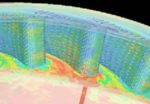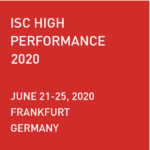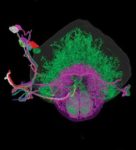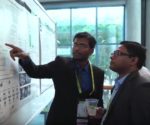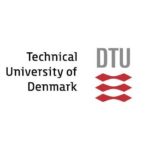HPE has been selected by the Pawsey Supercomputing Centre in Perth to deliver a new $2 million compute cluster that will support one of the Square Kilometre Array precursor projects in Australia, the Murchison Widefield Array (MWA) radio telescope. “The new 78-node cluster will provide a dedicated system for astronomers to process in excess of 30 PB – equal to 399 years of high definition video – of MWA telescope data using Pawsey infrastructure. The new cluster will provide users with enhanced GPU capabilities to power AI, computational work, machine learning workflows and data analytics.”
Video: Exploring the Dark Universe
“Heitmann discusses an ambitious end-to-end simulation project that attempts to provide a faithful view of the Universe as seen through the Large Synoptic Survey Telescope (LSST), a telescope currently under construction. She also described how complex, large-scale simulations will be used in order to extract cosmological information from ongoing and future surveys.”
Big Compute Fireside Chat with Sam Altman from OpenAI
In this video from the Big Compute 2020 event, Sam Altman from the OpenAI research laboratory discusses artificial intelligence Shawn Hansen, COO of Rescale. “I think of the most exciting developments in the field in the last few years has been how good AI for natural language is getting. I think we are going to see an explosion in the next few years of systems that can really process, understand, and interact with general language. It will, I think, be the first way that people really feel powerful AI. Because you’ll be able to interact with the systems like you do by talking to somebody else. You’ll be able to have dialogue that actually makes sense. And computers will be able to process huge volumes of text that are sort of very unstructured.”
GE Research Leverages World’s Top Supercomputer to Boost Jet Engine Efficiency
GE Research has been awarded access to the world’s #1-ranked supercomputer to discover new ways to optimize the efficiency of jet engines and power generation equipment. Michal Osusky, the project’s leader from GE Research’s Thermosciences group, says access to the supercomputer and support team at OLCF will greatly accelerate learning insights for turbomachinery design improvements that lead to more efficient jet engines and power generation assets, stating, “We’re able to conduct experiments at unprecedented levels of speed, depth and specificity that allow us to perceive previously unobservable phenomena in how complex industrial systems operate. Through these studies, we hope to innovate new designs that enable us to propel the state of the art in turbomachinery efficiency and performance.”
Call for Participation: ISC Workshop on In Situ Visualization 2020
The ISC Workshop On In Situ Visualization 2020 has issued its Call for Participation. The event takes place June 25 in Frankfurt, Germany. “We encourage contributed talks on methods and workflows that have been used for large-scale parallel visualization, with a particular focus on the in situ case. Presentations on codes that closely couple numerical methods and visualization are particularly welcome.”
Visualizing an Entire Brain at Nanoscale Resolution
In this video from SC19, Berkeley researchers visualizes an entire brain at nanoscale resolution. The work was published in the journal, Science. “At the core of the work is the combination of expansion microscopy and lattice light-sheet microscopy (ExLLSM) to capture large super-resolution image volumes of neural circuits using high-speed, nano-scale molecular microscopy.”
OnScale joins Revolution in Simulation community
Today OnScale announced their sponsorship of Revolution in Simulation, a collaborative community helping to increase the value of engineering simulation software investments through the democratization of simulation. OnScale is providing their expertise in CAE and funding to support the initiative. OnScale will participate as a moderator in the HPC topic as well as lead a new SME topical section coming soon at Rev-Sim.org on MultiPhysics Simulation.
Podcast: Simulating Galaxy Clusters with XSEDE Supercomputers
In this TACC podcast, researchers describe how they are using XSEDE supercomputers to run some of the highest resolution simulations ever of galaxy clusters. One really cool thing about simulations is that we know what’s going on everywhere inside the simulated box,” Butsky said. “We can make some synthetic observations and compare them to what we actually see in absorption spectra and then connect the dots and match the spectra that’s observed and try to understand what’s really going on in this simulated box.”
How NVIDIA Enables Scientific Research for HPC Developers
“Researchers, scientists, and developers are advancing science by accelerating their high performance computing applications on NVIDIA GPUs using specialized libraries, directives, and language-based programming models. From computational science to AI, CUDA-X HPC, OpenACC, and CUDA are GPU-accelerating applications to deliver groundbreaking scientific discoveries. And popular languages like C, C++, Fortran, and Python are being used to develop, optimize, and deploy these applications.”
Job of the Week: PhD scholarship in GPU processing for Super Resolution Ultrasound Imaging
The Technical University of Denmark (DTU) is seeking a in our PhD scholarship in GPU processing for Super Resolution Ultrasound Imaging in our Job of the Week. “This PhD projects develops real time processing of the acquired data using GPUs. The research is conducted in a truly multi-disciplinary environment consisting of the four academic partners specializing in advanced ultrasound imaging, silicon CMUT probes, animal experiments, and clinical investigations, and the main purpose is to translate the SURE method from a research idea to the clinic.”




